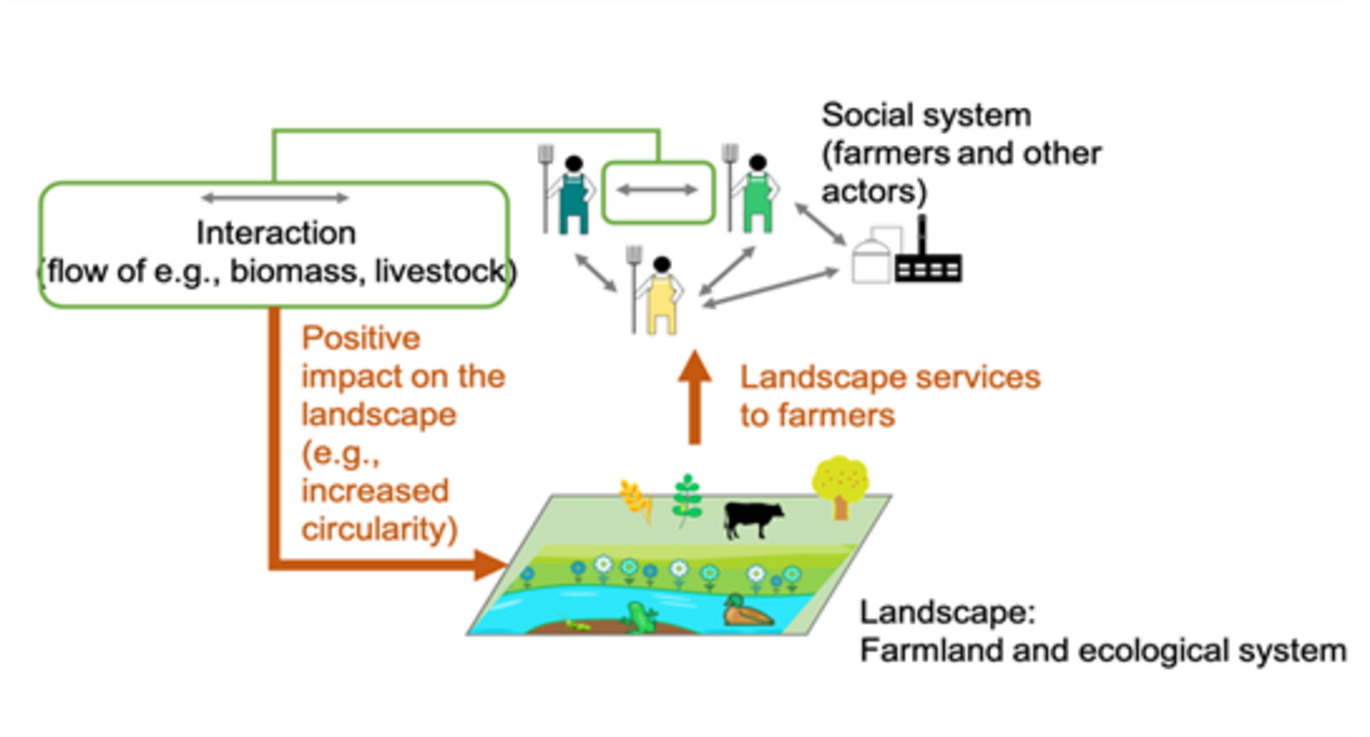Insights on interactions between farms
In a newly published report, the MIXED project explores the role of interactions among farmers as a foundational element for building mixed and resilient landscapes.

Mixed farming systems can be defined both at farm-level and at regional level and to learn more about mixedness beyond farm-level this report explores interaction between farms. In each chapter of the report, it dives further into the functioning of the interactions: from qualitative description up to simulations with an agent-based model. The interactions are characterized and analysed, along with the motivations behind them. Finally, the report simulates the emergent behaviour coming from farmers’ interactions and provides some advice for policymaking.
Interactions between farms as element for mixed landscapes
In the report the role of interactions among farmers is explored as a foundational element for building mixed and resilient landscapes. Farmer interactions are defined as coordinated, direct or indirect actions between two or more actors, with at least one being a farmer, that lead to exchanges of goods, animals, or services, contributing to nutrient recycling and landscape services.
These interactions are particularly important when they occur between specialized but complementary farms. To investigate their significance, a conceptual framework was developed and three analyses were conducted to assess their impact on mixed landscapes.
1) The first analysis explores interactions across six case studies, identifying key factors, barriers, and levers that influence these exchanges.
2) The second analysis explores farmers’ motivations for engaging in interactions, focusing on the French case study, Ariège, where more detailed interviews with a network of farmers were conducted.
3) The third analysis simulates farmer interactions, exploring potential future scenarios by adjusting attributes such as connectivity and trust. These simulations made it possible to assess the impact of farmer interactions on landscape resilience and mixedness.
Fostering mixedness at landscape level
The findings emphasized the critical role of interactions in fostering mixedness at the landscape scale. However, not all interactions contribute equally to mixedness, some might be oriented purely at economic development or food production - and careful attention is needed to ensure that they lead to nutrient recycling, also passing through quantification of the exchanged involved.
The semi-qualitative analysis showed that logistics, proximity among farmers, and social networks also play key roles in the success of farmer interactions, while barriers such as climate change and bureaucratic constraints must be considered for policymaking. Interactions are often based on informal contracts, so the importance of balancing formal and informal contracts is discussed, with policy recommendations focusing on building trust, promoting flexible contracts, and supporting long-term partnerships for agroecological transitions.
Simulations with agent-based modelling emphasized the importance of balancing collective and individual resilience and benefits, making sure that landscape resilience is built on benefits equally distributed among all the farmers.
Learn more about the topic here:
Accatino F., Triolet C., Dalgaard T., Gavrilescu C.A., Leonte J., Meuwissen M.P.M., Ramos M.C. dos, et al., 2024. Analysing farmer biomass, product, labour and land exchanges in a range of European landscapes, in : IFSA 2024 – European Farming Systems Conference. Trapani, IT. https://hal.inrae.fr/hal-04653765
Grillot M., Meunier C., Triolet C., Ryschawy J., 2024. Crop-livestock interactions between farms: how and why do they occur? A case-study in Southern France, in : IFSA 2024 – European Farming Systems Conference. Trapani, IT.
